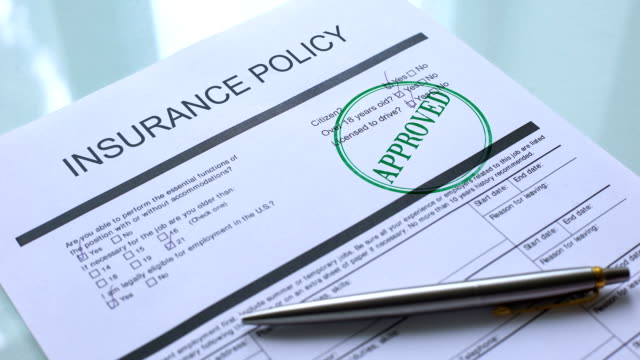Affordable Coverage: Your Ultimate Guide to Direct Auto Insurance

Direct auto insurance offers a streamlined, cost-effective solution for vehicle owners looking to maximize their coverage while minimizing expenses. But what exactly is direct auto insurance, and how does it differ from traditional auto insurance?
Direct auto insurance refers to a model where consumers purchase insurance policies directly from the insurer, bypassing intermediaries such as agents or brokers. This direct-to-consumer approach simplifies the process, often resulting in lower premiums and more personalized service. In contrast, traditional auto insurance typically involves an intermediary who helps the policyholder navigate the complexities of insurance products, but at an additional cost.
Benefits of Direct Auto Insurance
Cost Savings and Lower Premiums
One of the most significant advantages of direct auto insurance is the potential for cost savings. By eliminating the middleman, insurers can reduce administrative costs and pass those savings on to customers in the form of lower premiums. This can be especially beneficial for budget-conscious drivers seeking comprehensive coverage without breaking the bank.
Convenience of Dealing Directly with the Insurer
Direct auto insurance offers unparalleled convenience. Customers can interact directly with their insurer, making it easier to get answers to questions, make changes to their policy, or file a claim. This direct line of communication ensures that policyholders receive timely and accurate information, enhancing their overall experience.
Advantages of a Streamlined Claims Process
A streamlined claims process is another key benefit of direct auto insurance. When a claim is filed, direct insurers can handle it more efficiently, as there are fewer parties involved. This often leads to faster resolution times and less hassle for the policyholder, which is crucial during the stressful period following an accident or loss.
How to Choose the Right Direct Auto Insurance
Comparing Different Providers
Choosing the right direct auto insurance provider involves careful comparison. Start by researching different companies and their offerings. Look for insurers with strong reputations, high customer satisfaction ratings, and a range of coverage options that meet your needs. Online reviews and comparison websites can be valuable resources in this process.
Important Factors to Consider
When comparing providers, consider several critical factors:
- Coverage Options: Ensure the provider offers the types and levels of coverage you need, including liability, collision, comprehensive, and any additional protections you might require.
- Customer Service: Evaluate the quality of customer service. Prompt, helpful, and knowledgeable support can make a significant difference in your overall experience.
- Financial Stability: Choose a financially stable insurer to ensure they can meet their obligations when you file a claim. Ratings from agencies like AM Best can provide insights into an insurer’s financial health.
Understanding Policy Terms and Conditions
Understanding the terms and conditions of your policy is crucial. Take the time to read through the policy document carefully, paying attention to coverage limits, exclusions, and any endorsements or riders. If you have questions, don’t hesitate to contact the insurer for clarification. This will help you avoid surprises when you need to file a claim.
Common Misconceptions About Direct Auto Insurance
Addressing Myths and Incorrect Beliefs
Direct auto insurance is often misunderstood. Let’s debunk some common myths:
- Myth: Direct auto insurance is only for tech-savvy individuals.
- Fact: While online platforms are commonly used, many direct insurers also offer phone and in-person support.
- Myth: Direct insurers provide lower-quality service.
- Fact: Direct insurers often excel in customer service, as they control the entire process and can address issues promptly.
Providing Factual Information
To make an informed decision, it’s essential to rely on factual information rather than misconceptions. Direct auto insurance is a viable option for a wide range of drivers, offering competitive rates, comprehensive coverage, and high levels of customer satisfaction.
Customer Reviews and Testimonials
Real-Life Experiences from Customers
Reading customer reviews and testimonials can provide valuable insights into an insurer’s performance. Look for feedback on aspects such as claims processing, customer service, and overall satisfaction. Real-life experiences can highlight both the strengths and potential weaknesses of a provider, helping you make a more informed choice.
Importance of Checking Reviews
Checking reviews is a crucial step in the decision-making process. It allows you to gauge the experiences of other policyholders and identify any common issues or concerns. Positive reviews and high ratings can boost your confidence in a provider, while negative feedback might prompt you to look elsewhere.
Direct Auto Insurance vs. Traditional Auto Insurance
Comparing and Contrasting the Two Types
Direct auto insurance and traditional auto insurance each have their pros and cons:
- Direct Auto Insurance:
- Lower premiums due to the absence of intermediaries.
- Direct communication with the insurer.
- Streamlined claims process.
- Traditional Auto Insurance:
- Access to a personal agent who can provide tailored advice.
- Potentially broader range of coverage options.
- Familiarity and comfort for those accustomed to the traditional model.
Scenarios Where One Might Be More Beneficial
The choice between direct and traditional auto insurance depends on individual preferences and circumstances. For example:
- Direct Auto Insurance: Ideal for tech-savvy individuals who prefer managing their policies online and want to save on premiums.
- Traditional Auto Insurance: Suitable for those who value personalized service and the convenience of having an agent handle their insurance needs.
Steps to Get Direct Auto Insurance
Step-by-Step Guide on How to Apply
Getting direct auto insurance is a straightforward process. Follow these steps:
- Research Providers: Compare different direct insurers based on coverage options, customer reviews, and financial stability.
- Get Quotes: Use online tools to obtain quotes from multiple providers. This helps you compare premiums and coverage.
- Choose Coverage: Select the coverage options that best meet your needs and budget.
- Complete Application: Fill out the application form with accurate information about yourself and your vehicle.
- Submit Documents: Provide any necessary documents, such as your driver’s license and vehicle registration.
- Review and Purchase: Review your policy details, make any necessary adjustments, and purchase your insurance.
Documents and Information Needed
To apply for direct auto insurance, you will typically need:
- Personal identification (e.g., driver’s license)
- Vehicle information (e.g., make, model, year, VIN)
- Driving history
- Current insurance information (if applicable)
From Application to Approval
Once you’ve submitted your application and documents, the insurer will review them. If everything is in order, you’ll receive approval, and your policy will become active. This process can often be completed quickly, especially with direct insurers that prioritize efficiency.
Potential Drawbacks of Direct Auto Insurance
Balanced View of Possible Downsides
While direct auto insurance has many benefits, it’s important to consider potential drawbacks:
- Limited Personalized Service: Without an agent, you might miss out on personalized advice and assistance.
- Online Management: Those uncomfortable with online tools might find managing their policy challenging.
- Potential for Less Comprehensive Coverage: Some direct insurers may offer fewer coverage options compared to traditional insurers.
Mitigating These Issues
To mitigate these potential issues:
- Seek Support: Many direct insurers offer robust customer support through phone or chat to assist with any questions or concerns.
- Educate Yourself: Familiarize yourself with online tools and resources provided by the insurer to manage your policy effectively.
- Compare Coverage Options: Ensure the direct insurer offers comprehensive coverage that meets your needs.
Future Trends in Direct Auto Insurance
Emerging Trends and Technologies
The auto insurance industry is evolving, with several emerging trends poised to shape the future of direct auto insurance:
- Telematics: Usage-based insurance models leveraging telematics devices can offer personalized premiums based on driving behavior.
- Artificial Intelligence: AI-powered chatbots and virtual assistants can enhance customer service and streamline claims processing.
- Mobile Apps: Insurers are increasingly offering mobile apps for policy management, claims filing, and real-time support.
Benefits for Consumers
These trends can significantly benefit consumers by providing more personalized, efficient, and user-friendly insurance experiences. Telematics, for example, rewards safe driving habits with lower premiums, while AI and mobile apps simplify interactions and improve service accessibility.
Conclusion
Direct auto insurance offers a compelling alternative to traditional auto insurance, providing cost savings, convenience, and efficient service. By understanding the benefits, addressing common misconceptions, and carefully choosing the right provider, consumers can enjoy comprehensive coverage at competitive rates. As the industry continues to evolve with new technologies and trends, direct auto insurance will likely become an even more attractive option for savvy drivers. Consider exploring direct auto insurance to unlock affordable and reliable coverage tailored to your needs.






